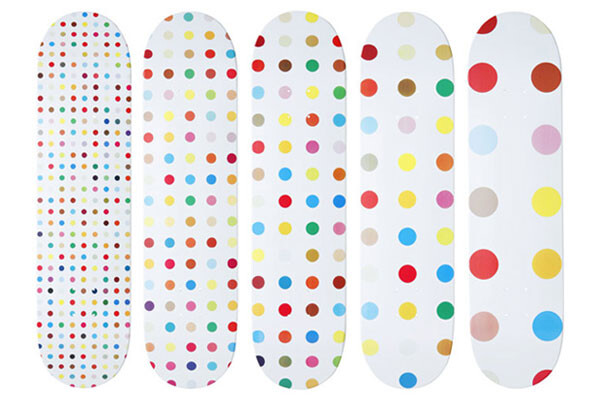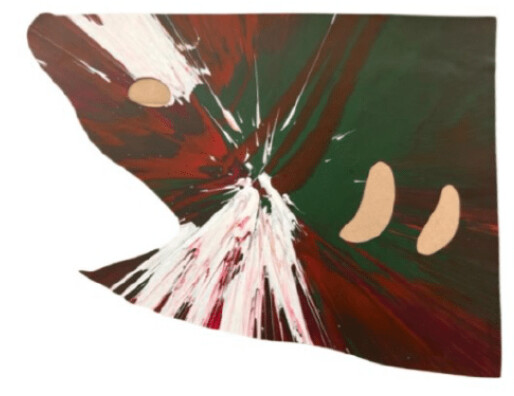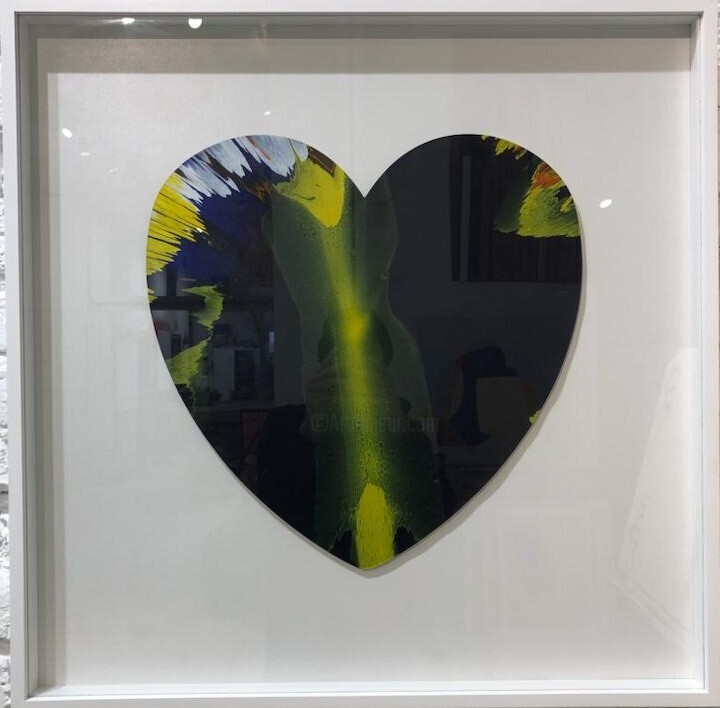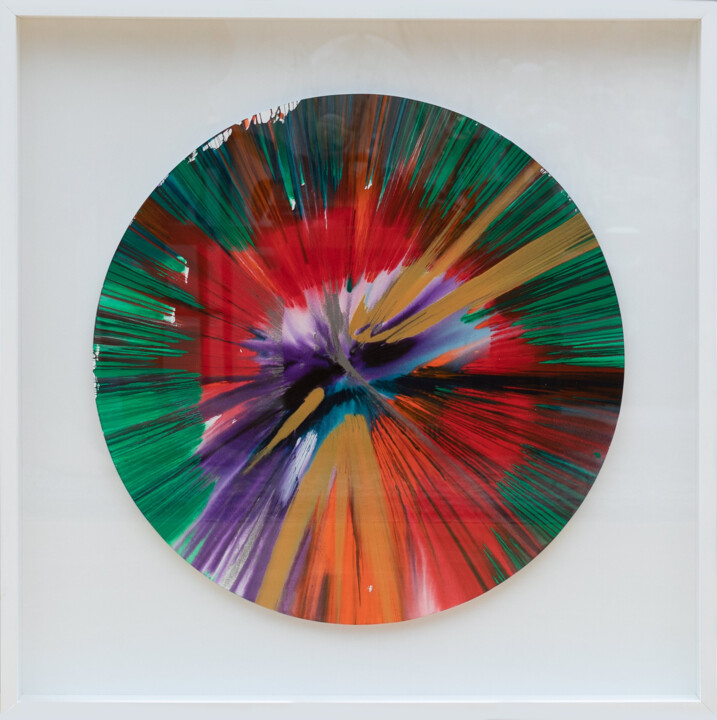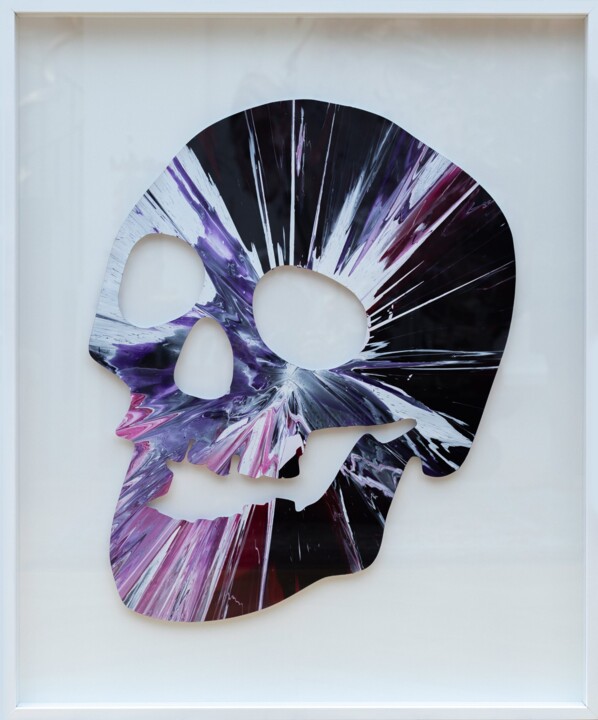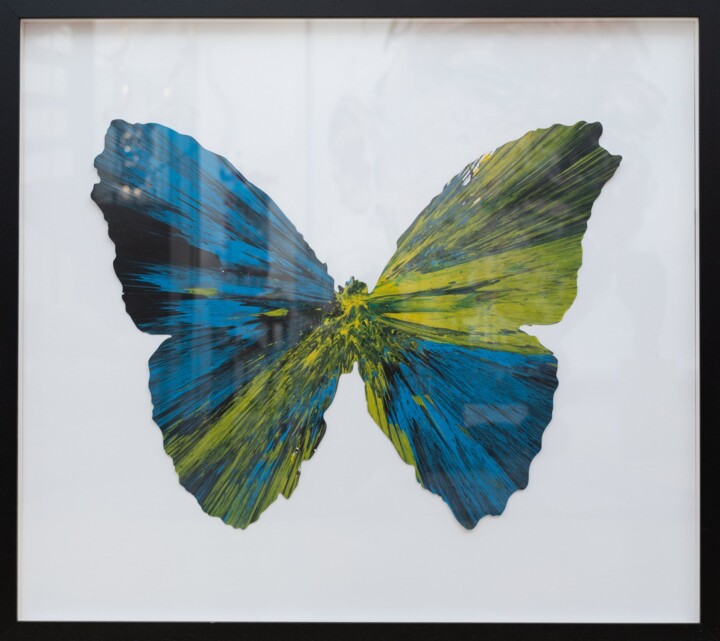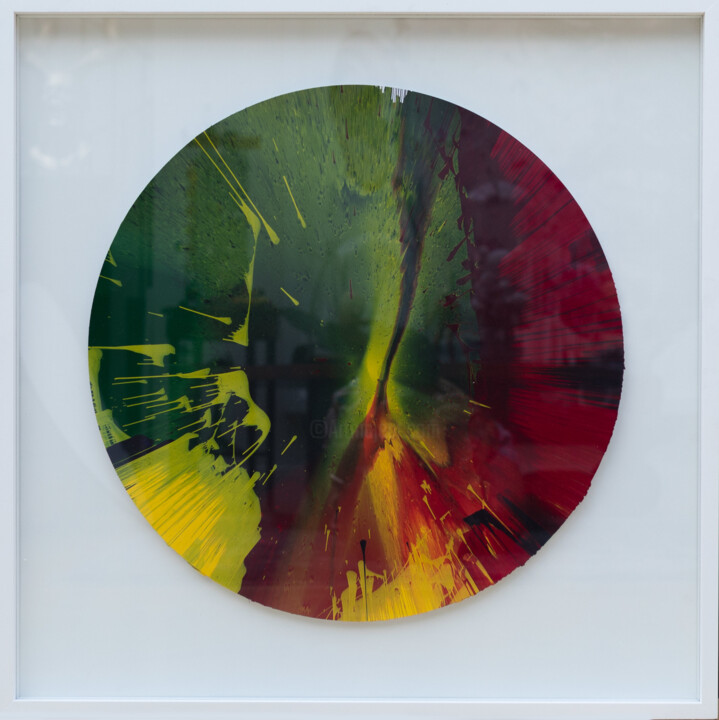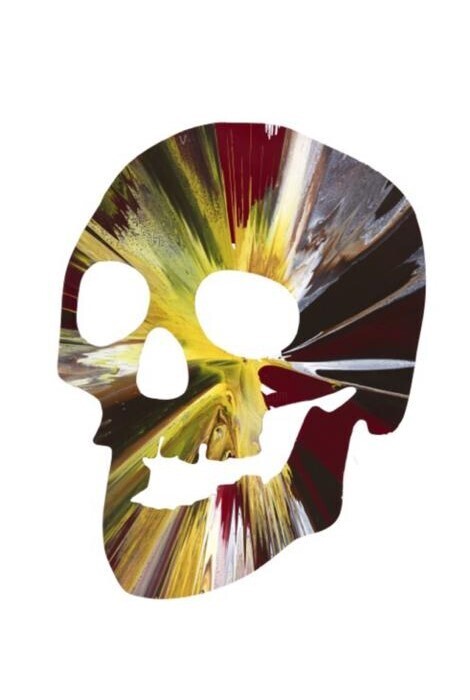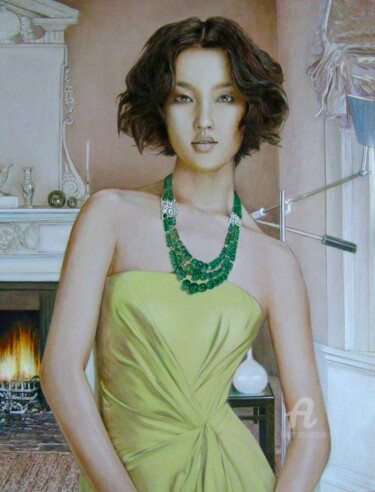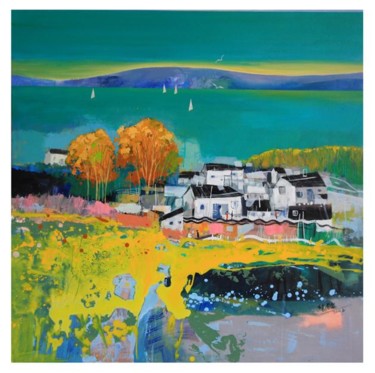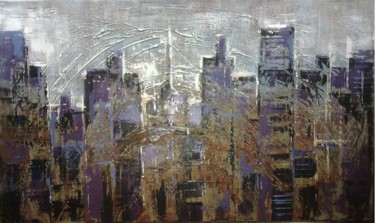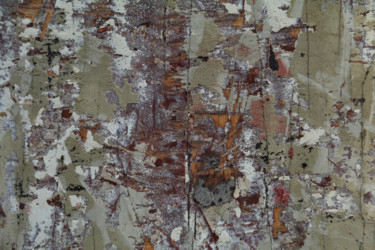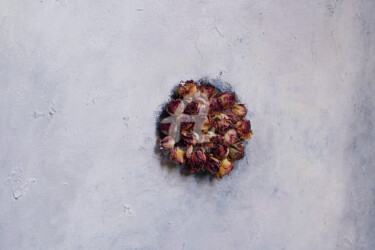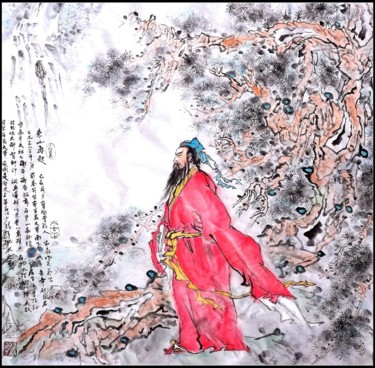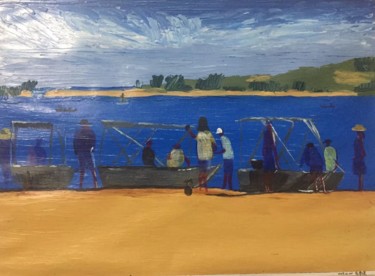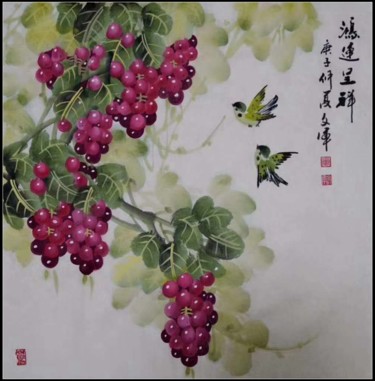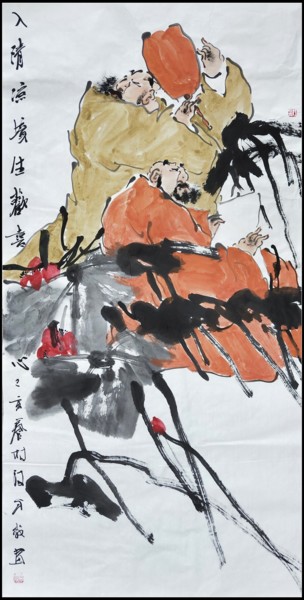Who is Qiao Zhibing ?
Qiao Zhibing, who earned his wealth through his nightclub and karaoke bar ventures in Shanghai and Beijing, has emerged as a prominent figure in China's international contemporary art scene over the past decade. According to ARTnews, his impressive collection, which spans 500 pieces, features work from acclaimed artists such as Sterling Ruby, Theaster Gates, Thomas Houseago, Olafur Eliasson, Michaël Borremans, Damien Hirst, and Wilhelm Sasnal. It also includes pieces by renowned Chinese artists like Zhang Enli, Liu Wei, Xu Zhen, Qiu Xiaofei, Yang Fudong, and Ou Yangchun. His collection is noted for significant pieces like Adrián Villar Rojas's “The Theater of Disappearance” (2017) and Danh Vo’s Untitled (2015), a glass artwork engraved by Vo’s father that was showcased in the Guggenheim Museum’s Vo survey in 2018.
Qiao embarked on his art collecting journey in 2006, driven by the desire to decorate his empty walls. He founded the Tank Shanghai complex, a fusion of art museum and leisure facility established on the Huangpu River's bank, repurposing five disused oil tanks. This complex, crafted by OPEN Architecture, a firm based in Beijing, spans roughly 640,000 square feet and includes around 100,000 square feet dedicated to exhibition space. Tank Shanghai is part of the West Bund Cultural Corridor, a government initiative aimed at enhancing cultural programming in various art venues, including the Long Museum and the Yuz Museum, founded by Budi Tek, another notable figure featured in ARTnews Top 200. Tank Shanghai was inaugurated in 2019 with a solo exhibition by Villar Rojas titled “SOMETIMES YOU WONDER, IN AN INTERCONNECTED UNIVERSE, WHO IS DREAMING WHO?”
Interview with Qiao Zhibing
Your journey into the realm of collecting art initially stemmed from your desire to embellish your nightclubs in Shanghai and Beijing. However, this pursuit swiftly blossomed into a profound fascination with contemporary art, leading you to become actively engaged in the world of collecting. How has the act of collecting evolved in significance for you today?
My profound ardor for contemporary art has granted my collection the power to encapsulate the era I have traversed. It has transformed into a tangible representation of the time I've experienced.
Could you share which artists currently captivate your attention with a particular fervor, and what ignites your interest in them?
My focus gravitates towards artists who possess a unique insight into our ever-evolving world and who have the ability to kindle my inspiration.
Do your artistic pursuits frequently lead you on journeys across the globe in pursuit of the art scene?
I derive immense joy from embarking on voyages to partake in the artistic tapestry of the world, using it as a window to gain insight into different cultures. Additionally, my travels grant me the opportunity to visit private art collections and connect with individuals who share my passion.
Do you reckon that the decision to acquire a piece of art is intertwined with the context in which it is presented?
Indeed, I believe that the context in which a piece of art is displayed can significantly influence one's decision to acquire it. However, personal experiences also play a pivotal role in shaping my choices in the realm of art acquisition.
In 2015, you established Qiao Space, a publicly accessible venue that not only showcases your private art collection but also extends an invitation to external artists for their participation. Could you shed light on why this inclusive approach holds significance for you?
My ardor for contemporary art fuels my commitment to its promotion. Managing an institution, as opposed to merely collecting, introduces a different mindset. As an institution, our primary focus is to curate exceptional exhibitions.
In March of the preceding year (2019), you embarked on another ambitious endeavor with the opening of TANK Shanghai, a transformation of a colossal former industrial oil tank site into a multifunctional arts center. What would you identify as one of the most formidable challenges you encountered while reshaping this vast space into your vision for an expansive arts venue?
The task of establishing TANK Shanghai presented a challenge in the sense that I didn't possess a predefined blueprint for the endeavor, and it was a journey of exploration. Nonetheless, this lack of preconceived notions became an advantage as it freed me from constraints, allowing for daring experimentation.
The overarching vision behind TANK Shanghai is to imbue art with the capacity to impact a broader audience, fostering a greater cultural influence.
To someone entirely unfamiliar with the art market, how would you characterize it?
Art is a realm that can offer you much more than financial value; it extends into the realm of aesthetics. It has the power to enrich your intellectual depth, enabling you to perceive the world in new and profound ways.
Are there any privately owned art collections that you would suggest as worthwhile destinations for public exploration?
Certainly, I would highly recommend visiting the following publicly accessible private collections:
François Pinault - Explore the magnificent Palazzo Grassi and Punta Della Dogana for an immersive artistic experience.
Mera and Donald Rubell - Immerse yourself in the captivating Rubell Museum to witness their remarkable collection.
Christian and Karen Boros - Don't miss the opportunity to visit the Boros Collection, a treasure trove of contemporary art awaiting your exploration.
Qiao Space and Tank Shanghai
1. Qiao Space, located on Longteng Avenue in the West Bund of Shanghai, is a private exhibition venue overseen by the dedicated collector Qiao Zhibing. This unique space is devoted to showcasing exceptional contemporary artists, encompassing talents from both the international stage and the vibrant artistic landscape within China. Distinctive in its approach, Qiao Space hosts exhibitions without rigid time constraints, offering a platform for extraordinary artists to shine. Alongside his personal collection, Mr. Qiao's aspiration is to extend the enchantment of contemporary art to the wider community of art enthusiasts, fostering a shared appreciation for this captivating genre.
2. TANK Shanghai represents a trailblazing non-profit art institution, serving as a dynamic and multifaceted artistic hub that offers the public an immersive experience with art, architecture, urban landscapes, nature, and the breathtaking panorama of the Huangpu River through a spectrum of contemporary art exhibitions, events, and activities. Situated at 2380 Longteng Avenue, Xuhui District, Shanghai, TANK Shanghai occupies a prime location in the heart of the Xuhui Riverfront, gracing the shores of the Huangpu River. The five colossal tanks, once belonging to the historic Shanghai Longhua Airport (decommissioned in 1966), form the structural foundation of TANK Shanghai. These tanks boast expansive interiors with soaring heights of more than 15 meters, characterized by their industrial domes and gracefully curved outlines. TANK Shanghai encompasses five tanks in total, with three interconnected to serve as dedicated exhibition spaces for the institution. The remaining two tanks fulfill auxiliary roles. It constitutes an artistic ecosystem that seamlessly melds diverse exhibition areas, verdant parks, open green spaces, inviting plazas, riverfront vistas, and charming cafes, rendering it a vibrant and iconic focal point of art and culture in Shanghai.
Focus on the Tank Shanghai
On the banks of the Huangpu River in Shanghai, there used to be five abandoned aviation fuel tanks on an empty industrial site. These tanks, remnants of the city's former Longhua Airport, were transformed and revitalized by OPEN Architecture. Over a period of six years, these disused tanks were converted from mere waste containers into a dynamic contemporary art center, complete with galleries and other public spaces located inside the tanks themselves. Tank Shanghai is a rare global example of repurposing aviation fuel tanks, and since its opening in March 2019, it has drawn millions of visitors and firmly established itself within the city's contemporary art scene.
Tank Shanghai is envisioned as a hybrid space, simultaneously serving as an art museum and a welcoming park, creating a unique haven for both humanity and the natural world. This project distinguishes itself by being open, easily accessible, and harmoniously blended with the neighboring environment. It not only honors the industrial history of the site but also aims to challenge traditional notions of site boundaries and divisions.
Notably, Tank Shanghai consciously rejects the concept of confinement through borders. Vast, gently sloping landscaped meadows extend towards and encircle each tank gallery, granting unimpeded access to the street and riverside. This design invites visitors and passersby to fluidly traverse between the urban setting, the natural world, and the realm of art. Amidst the backdrop of Shanghai's more exclusive cultural endeavors, this approach fosters a remarkable sense of social inclusivity. Many who venture to the Tanks do so not only to admire art exhibitions but also to jog or enjoy picnics on the project's undulating landscaped lawns. This exceptionally open approach to the museum space has yielded unexpected advantages and has sparked fresh operational paradigms for the art center.
Within just one year, Tank Shanghai has not only hosted prestigious art exhibitions but has also accommodated a fashion week, book fair, art festival, and AI conference. By introducing diverse audiences to what was traditionally an enclosed space within the art center, Tank Shanghai has injected an unprecedented vitality into the formerly industrial neighborhood and the broader southwestern banks of the city.
At the core of the project's architectural concept lies the harmonious fusion of architecture and the natural landscape through the creation of a Z-shaped "Super-Surface" spanning 5 hectares, adorned with trees and grasses. This Super-Surface acts as a connecting thread between the five tanks and seamlessly interweaves various facets of the site. Two of the tanks are perched above this Super-Surface, while the remaining three are partially submerged, yielding free-flowing indoor public areas and opportunities for accessing the galleries beneath them. Entrance ramps to each tank are enveloped in steel panels, engaging in a visual dialogue with the gracefully curved structures of the original tanks. The steps encircling the tanks double as seating for the café. Floor-to-ceiling windows and skylights flood these subterranean spaces, which would otherwise be dimly lit, with natural light, allowing gallery visitors to observe the changing seasons in the park beyond.
The Super-Surface extends across the site from the Huangpu River to Longteng Avenue, effectively restoring public access to the once-inaccessible Huangpu riverfront. A network of pathways meandering through the park offers visitors the chance to explore not only the riverfront but also various other public spaces. A terraced waterscape leads down to a paved urban plaza, where hidden misting devices create a refreshing mist during the summer months. Adjacent to the south side of the plaza lies an "Urban Forest" comprised of trees and indigenous grasses, providing shade and a tranquil natural retreat. Covering the eastern section of the site, a secondary grassy plaza serves as an open space for events and leisure activities, and doubles as a standing area for audiences during outdoor music festivals. Two smaller galleries, accompanied by an array of publicly accessible art installations, are scattered throughout the park. Wrapped in mirrored stainless steel, the "Reflecting Gallery" nestled within the Urban Forest showcases the Tanks' artistic splendor. A second versatile "Project Space," overlooking the river and a tree-lined reflecting pool, features a distinctive saw-toothed roofline, deliberately contrasting with the tanks' graceful curves.
The architectural strategy employed to retrofit the five tanks is tailored to the specific needs of the various programs housed within them. Tank 1, hosting a two-story live-house and bar, incorporates a drum-shaped inner tank with curved walls to enhance acoustics for musical performances. Tank 2, designated as a restaurant, is organized around a central circular courtyard, with a roof deck for alfresco dining perched on top. Tank 3 retains its original structure intentionally, offering a unique domed space for displaying large contemporary artworks and installations. An operational oculus skylight has been added to introduce natural light and even rainfall into the gallery interior. Tank 4 comprises a three-level cube providing more traditional spaces for gallery exhibitions and canvas art, while Tank 5 features an added rectangular volume that traverses the tank's core and emerges on both ends, forming two stages. From an exterior perspective, the tanks have preserved their original industrial aesthetics, with only occasional round or capsule-shaped openings and portholes added to the design.
Tank Shanghai embodies a fresh paradigm in urban art institutions, bridging the gap between historical legacies and future aspirations, rekindling the human connection with the natural world, and seamlessly merging the realms of art and nature. This institution defies conventional confines, operating as an art center that knows no bounds. As it further integrates itself into the tapestry of city life, Tank Shanghai will persist in nurturing and motivating the development of more encompassing and communal cultural spaces, fostering a sense of unity and inclusivity within the city's cultural landscape.


 Selena Mattei
Selena Mattei

